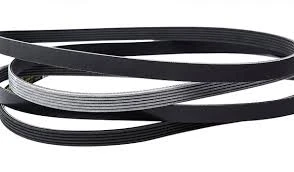- Arabic
- French
- Russian
- Spanish
- Portuguese
- Turkish
- Armenian
- English
- Albanian
- Amharic
- Azerbaijani
- Basque
- Belarusian
- Bengali
- Bosnian
- Bulgarian
- Catalan
- Cebuano
- Corsican
- Croatian
- Czech
- Danish
- Dutch
- Afrikaans
- Esperanto
- Estonian
- Finnish
- Frisian
- Galician
- Georgian
- German
- Greek
- Gujarati
- Haitian Creole
- hausa
- hawaiian
- Hebrew
- Hindi
- Miao
- Hungarian
- Icelandic
- igbo
- Indonesian
- irish
- Italian
- Japanese
- Javanese
- Kannada
- kazakh
- Khmer
- Rwandese
- Korean
- Kurdish
- Kyrgyz
- Lao
- Latin
- Latvian
- Lithuanian
- Luxembourgish
- Macedonian
- Malgashi
- Malay
- Malayalam
- Maltese
- Maori
- Marathi
- Mongolian
- Myanmar
- Nepali
- Norwegian
- Norwegian
- Occitan
- Pashto
- Persian
- Polish
- Punjabi
- Romanian
- Samoan
- Scottish Gaelic
- Serbian
- Sesotho
- Shona
- Sindhi
- Sinhala
- Slovak
- Slovenian
- Somali
- Sundanese
- Swahili
- Swedish
- Tagalog
- Tajik
- Tamil
- Tatar
- Telugu
- Thai
- Turkmen
- Ukrainian
- Urdu
- Uighur
- Uzbek
- Vietnamese
- Welsh
- Bantu
- Yiddish
- Yoruba
- Zulu
ನವೆಂ . 29, 2024 19:07 Back to list
Understanding the Importance of Timing Belts in 3D Printers for Precision and Performance
Understanding the Importance of 3D Printer Timing Belts
In the world of 3D printing, precision and reliability are paramount. One of the essential components that play a critical role in ensuring the accuracy of 3D prints is the timing belt. This seemingly simple piece of hardware is pivotal in the movement of the printer’s extrusion head and the build platform, influencing the overall quality of the printed object.
What is a Timing Belt?
A timing belt is a type of belt that is specifically designed to ensure synchronous movement between the components of a machine, in this case, a 3D printer. These belts are typically made of durable materials such as rubber, with teeth that interlock with pulleys to provide a firm grip during operation. This design eliminates slippage, enabling precise control over the movement of the printer's axes.
The Role of Timing Belts in 3D Printing
In a typical Cartesian-style 3D printer, timing belts are used in the X and Y axes, allowing the print head to move horizontally across the build plate. For printers that utilize a CoreXY or Delta configuration, timing belts still play a crucial part in coordinating complex movements.
Because the timing belts directly influence the positioning of the print head, their quality, tension, and condition are vital for achieving an accurate print. A loose, worn, or damaged belt can lead to misalignment, resulting in layer shifting, poor adhesion between layers, or even total print failure.
Factors to Consider when Choosing Timing Belts
3d printer timing belt

1. Material Quality High-quality timing belts are typically made from reinforced materials that stand up to the rigors of 3D printing. It's essential to choose belts that are durable and wear-resistant.
2. Tooth Design Timing belts come in various tooth profiles, such as GT2 or GT3. The choice of tooth design can affect everything from noise levels to the maximum achievable speed and accuracy of the printer.
3. Length and Width Ensure that the belt length and width are appropriate for your specific 3D printer model. An incorrectly sized belt can lead to significant operational issues.
4. Tensioning Systems Many modern 3D printers come with adjustable tensioning systems that allow users to tighten or loosen the timing belts as needed. Proper tension is crucial; belts that are too loose can cause slippage, while overly tight belts can lead to excessive wear.
Maintenance of Timing Belts
To maintain the functionality and longevity of timing belts, regular checks are essential. Users should observe for signs of wear, fraying, or elongation. Proper lubrication can also extend the life of the belt while ensuring smooth operation. Additionally, keeping the printer clean and free from debris will contribute to the reliability of the belt system.
Conclusion
In summary, timing belts are vital components of a 3D printer that significantly influence print quality and accuracy. Understanding their function and ensuring they are well-maintained can enhance the performance of your 3D printer, leading to successful and impressive prints. As technology continues to evolve, the importance of each component, including timing belts, will only grow in significance within the 3D printing landscape. Whether you are a hobbyist or a professional, investing time in understanding and caring for these belts can make all the difference in your 3D printing projects.
-
Korean Auto Parts Timing Belt 24312-37500 For Hyundai/Kia
NewsMar.07,2025
-
7PK2300 90916-T2024 RIBBED BELT POLY V BELT PK BELT
NewsMar.07,2025
-
Chinese Auto Belt Factory 310-2M-22 For BMW/Mercedes-Benz
NewsMar.07,2025
-
Chinese Auto Belt Factory 310-2M-22 For BMW/Mercedes-Benz
NewsMar.07,2025
-
90916-02660 PK Belt 6PK1680 For Toyota
NewsMar.07,2025
-
drive belt serpentine belt
NewsMar.07,2025

